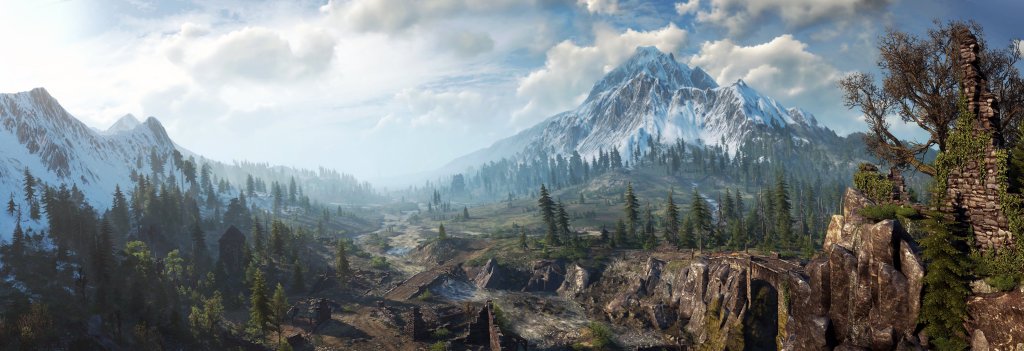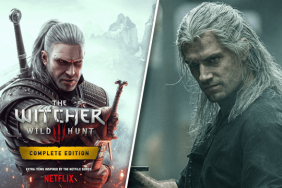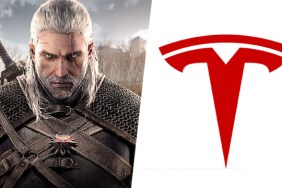I got to play The Witcher 3: The Wild Hunt for four hours, and now all I want to do is play The Witcher 3. The End.
Okay, I understand that that's too short for a functional preview, so I'll write some more here. I am, unashamedly, a huge fan of the series, not just the games but the novels as well, which tell the ongoing story of Geralt of Rivia, a Witcher. Witchers are orphans, taken in, to a brotherhood that mutates them in adolescence for the purpose of killing monsters, on a planet where worlds collided hundreds of years ago—in an event called "The Conjunction of the Spheres"—bringing magic (and monsters) into the world. All this is handily explained in a motion comic that plays before the game's opening cinematic.
At an event in San Francisco, press got hands-on with the game for the first time last Wednesday, giving access to the game's prologue and a later section featuring the Skellige Islands—the area featured in the 2013 E3 Demo. After the gorgeous intro, The Witcher 3: The Wild Hunt opens in better times, with Geralt waking in the Witcher stronghold of Kaer Morhen to his Sorceress lover Yennifer of Venderberg admonishing him for not going out to train with Ciri, a young girl training to be a Witcher. The training with Ciri amongst other Witchers makes up the game's excellent tutorial, which manages to introduce both the basic gameplay concepts and character relationships that will make up the heart of the rest of the game.
First thing first, I played the demo on the X-Box One and found it to be (mostly) jaw-droppingly gorgeous. Never moreso than in close-ups of Geralt and Yennifer. The textures on the faces are so beautiful and highly detailed, they almost look real. Before leaving Geralt and Yennifer's room in Kaer Morhen, I took the option of having Geralt walk out on their balcony, overlooking a gorgeous vista, to have Geralt sum things up in his usual, sardonic style, "Shit, the valley is beautiful."
Dan Oravasaari, of Playstation Lifestyle, and I sidebarred partway through this first section of the demo, and he opined, "I feel like sometimes it's the best looking game I've ever seen, and other times . . . "
Other times, not. The hair or fur in particular is jarring, especially on top of such amazing faces, clothes, and armor. Textures of grasses at times had jaggy aliasing problems, and there was minor visual slowdown in some places. Later, both of us checked out the PS4, where the picture looked more vibrant, there was less aliasing, the fur and hair was slightly more nuanced, and there was a little less slowdown.
Neither of us checked out the PC build, but CD Projekt RED Head of Global Communication Michał Platkow Gilewski told us that the higher end options had been turned off for the press experience to keep the preview experience more level. The PC version will feature a number of higher end visual options not available on consoles for beastly rigs, like higher resolution and NVidia's HairFX, amongst others.
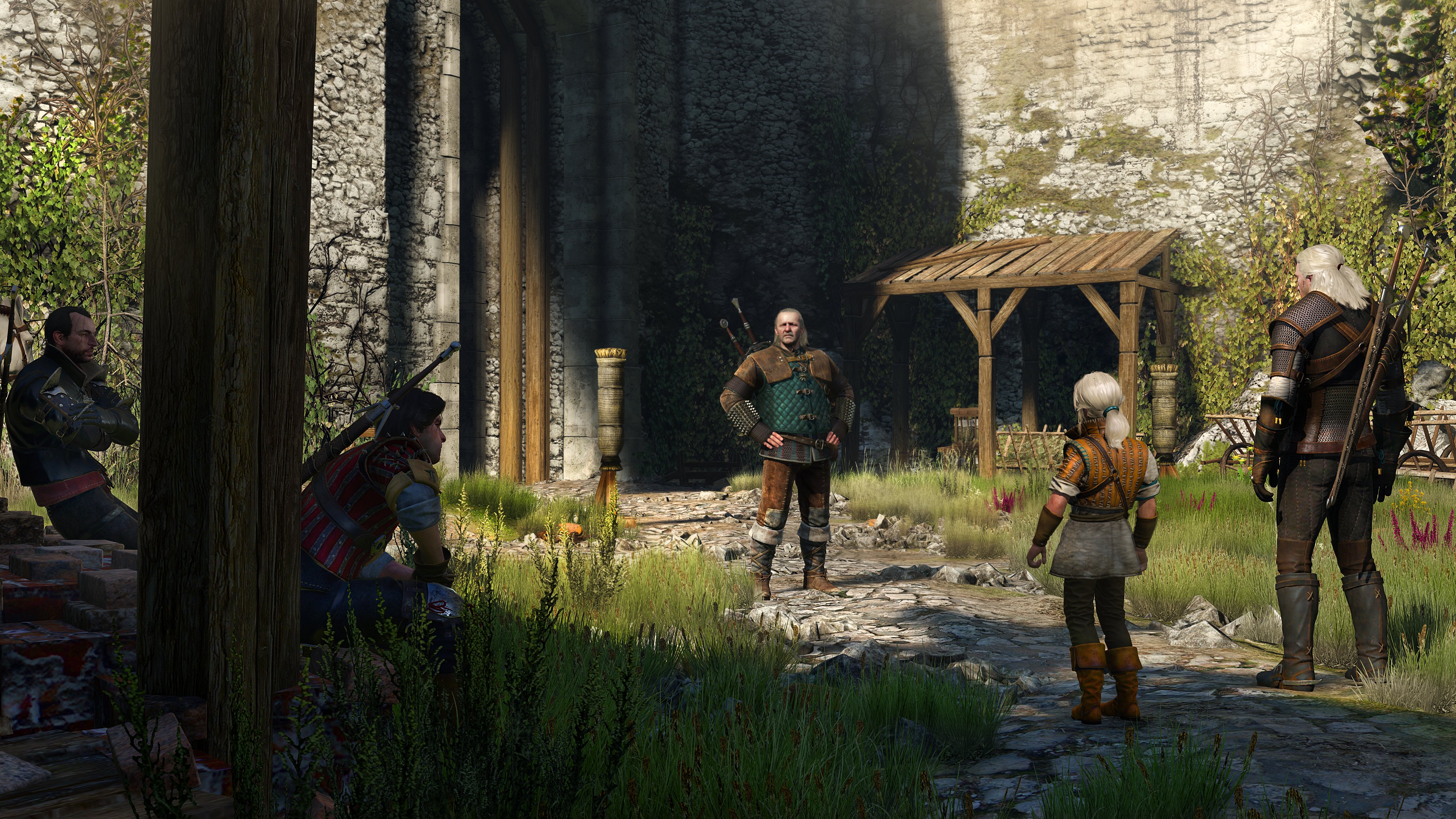
But to be honest, the only reason the hair looked odd was that the faces, the textures on clothing and backgrounds, and the general extreme fidelity of the world was so high. This extended to facial animation during in-game conversations, whose amazing micro-expressions, Gilewski informed us, are procedurally driven, and even more advanced than what was shown at E3 last year. The world itself is incredibly vast, and level designer Miles Tost told me that a great deal of work was done to create high contrast silhouettes of distant places to draw the player's eye to potential adventuring spots.
Shortly after the combat tutorial, with Geralt squaring off against wisened old Witcher Vesemir (and the young Ciri against a padded wooden dummy) things turned dark, with black riders with skull helmets arriving, and cutting the girl down, prompting Geralt to awaken a second time, in the present. Waking on the road in Temeria, next to a travel-worn Vesemir, they continued Geralt's quest that began at the end of The Witcher 2, finding Yennifer, his long lost love.
You don't really need to know any of this to play The Witcher 3, the game does a fantastic job of wrapping up all the character relationships effortlessly with a witty-dialogue-and-character-gestures bow that makes the character relationships abundantly clear through subtext. The rest of the prologue involves Geralt and Vesemir arriving in a small town, where in return for information from the local garison of Nilfgaardian soldiers about Yennifer's whereabouts, he agrees to slay a gryphon that has been attacking villagers and soldiers.
Gameplay here will be familiar to players of The Witcher 2, and thankfully combat is easier and more intuitive, thanks partially to the short tutorial. As with prior games, multiple sidequests are immediately available, with other adventure opportunities off the beaten path. One of the devs tapped me on the shoulder as I approached a Temerian soldier's corpse near a bridge, and informed me that the key I'd find if I searched his body might open something on the bottom of the river. Not a quest, but the quarry I swam to on the riverbed was no slouch offering either, and the Witcher 3 is full of these kinds of opportunities in addition to its quests.
Quests in the Witcher series often boil down to a series of investigations using Geralt's Witcher abilities. In Witcher 3, holding down a shoulder button allows the player to take advantage of his Witcher sense, which allows you to see consumables in orange and clues in red. Once the investigations are concluded (often with more than one combat involved on the way) you virtually always have at least two choices in how to finish the quest.
In one sidequest from the Prologue, a dwarven smithy paid for Geralt to find the perpetrator who set fire to his house, due to his collaborating with the Nilfgaardian Empire's occupying forces. Using Geralt's Witcher senses to track down the arsonist to a nearby building, I had the option of turning him in, or letting him go with the promise to set no more fires. I turned him in, and the smith called for justice from the Nilfgaardians, who, following their harsh penal code, proceeded to lead the arsonist off to be hung from a tree for his crimes. These choices have consequences for the individual towns that are told in prologues that take place months or years after Geralt's story ends.
Larger quests, or battles against monsters often involve doing research on the beasts to heighten Geralt's odds against them. In this case, investigating the site of gryphon attacks allows Geralt to determine what kind of gryphon it is which helps to determine how to approach it. A secondary part of the quest allows him to set up an ambush with Vesemir in a field.
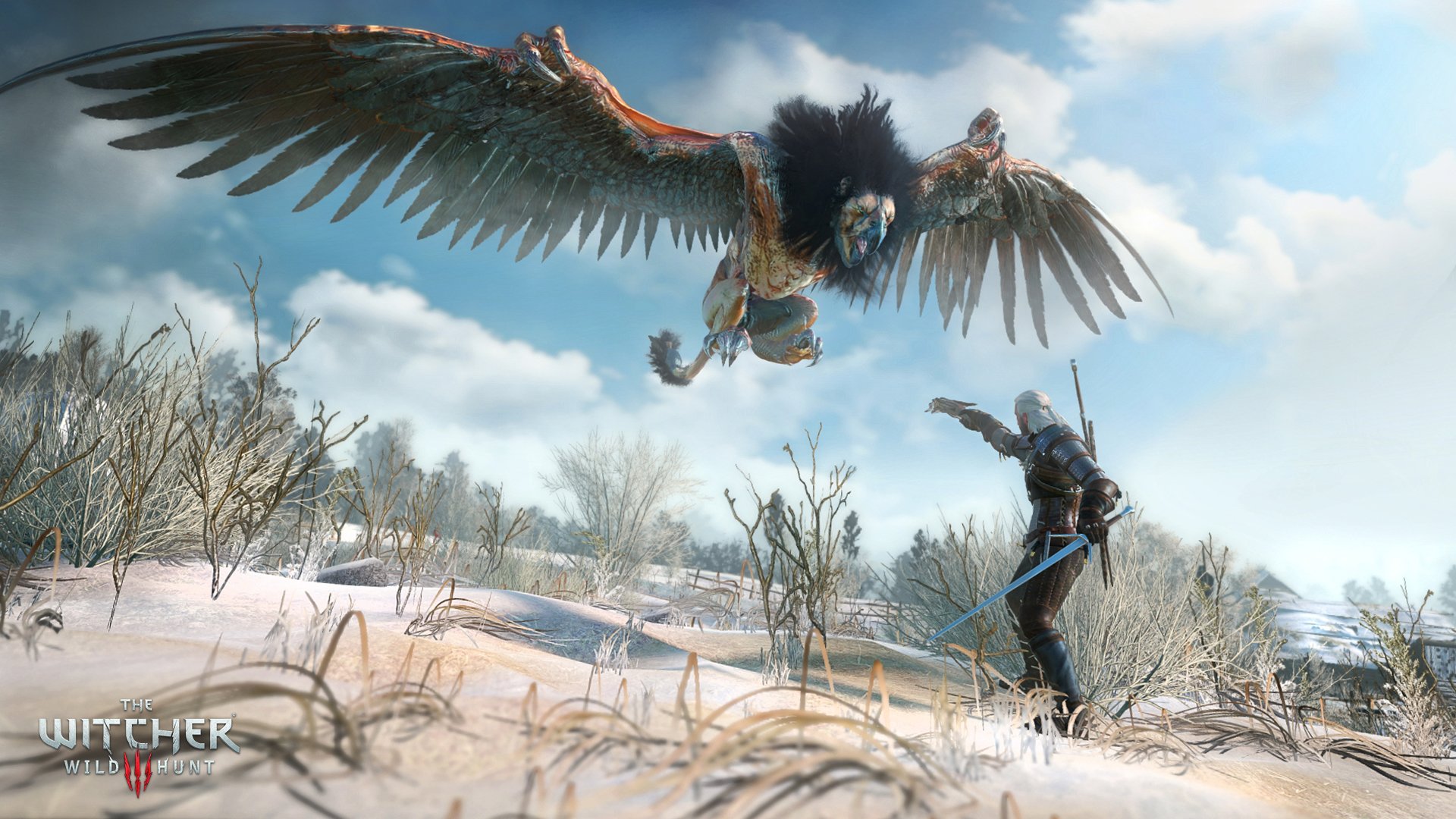
The battle with the gryphon was easily one of the most exciting parts of the prologue gameplay, and even though I was playing the game on easy, it felled me, and I had to start the combat over. Playing more conservatively, and dodging, I quickly took the beast down to half it's life, when it took to the skies again. I wasn't able to knock it down with a crossbow, so I had to whistle for Geralt's horse, Roach, and chase after it from the ground at a full gallop, until it alighted at a nearby mill. Having taken down the gryphon and gotten his information, Geralt, is surprised by the arrival of Yennifer when he returns to the town, and she takes him to see Emhyr, Emperor of Nilfgaard, at the occupational capital of Vizima; whom has an offer for them both, one which the sorceress has already accepted.
There were moments in The Witcher 2 where small choices made big differences. These choices often came with a quick time limit within which you had to choose an option of what to do, or it would choose your most recently selected choice. In some cases the far-reaching consequences were totally unexpected, as when one choice resulted in a town-wide party, and another with a race riot. In the Witcher 3 prologue there were two of these moments, and one was the choice whether or not to bow before the Emperor of Nilfgaard. I declined, and I wondered just what consequence that would have, further down the line, in helping to set up which of The Witcher 3's thirty-six different endings I might suddenly be angling towards.
At that point I asked to play the second available section of the game, the Skellige Islands. One of the devs on-hand set it up for me.
"Tada," He said, "You are now level 15."
Towns, cities, and castles in The Witcher 3 are bustling with activity. Geralt was led by a steward into a great hall of a cliffside castle by the sea, where the Viking-like denizens of the hall were carousing, but each also seemed to be having their own individual conversations. The level of detail in creating this moment was magnificent, unlike any other world-building I'd seen in a game in terms of having all these characters having individual unrepreated conversations. Knowing I didn't have much gameplay time left, I had Geralt pass through the hall and see the king, getting involved in a series of side conversations about the elections for the islands' new king for which the banquet was a prelude.
Alerted by the sounds of battle, Geralt and the King, Crach an Craite, discovered that the hall had become a slaughterhouse, but where animals were doing the slaughtering: a series of bears had attacked and killed many of the partygoers. Having defeated the bears, Geralt then had the option of helping one of the king's two children; one who wanted to get revenge, and the other who wanted to investigate where the bears came from. I chose the latter, and began a weird Sherlock-style investigation of murder-by-bear, before at last I pulled away from the game for one last talk with the developers.
The Witcher 3: The Wild Hunt is set to release on May 19th of this year on PC, Xbox One, and the Playstation 4. It's been the number one game on my watch-list for the past two years, and getting hands-on finally has only added to the excitement.
